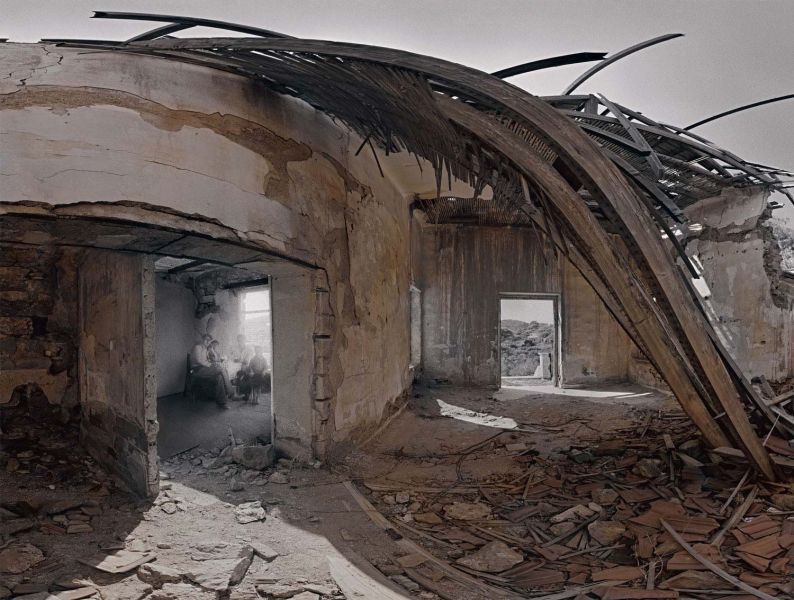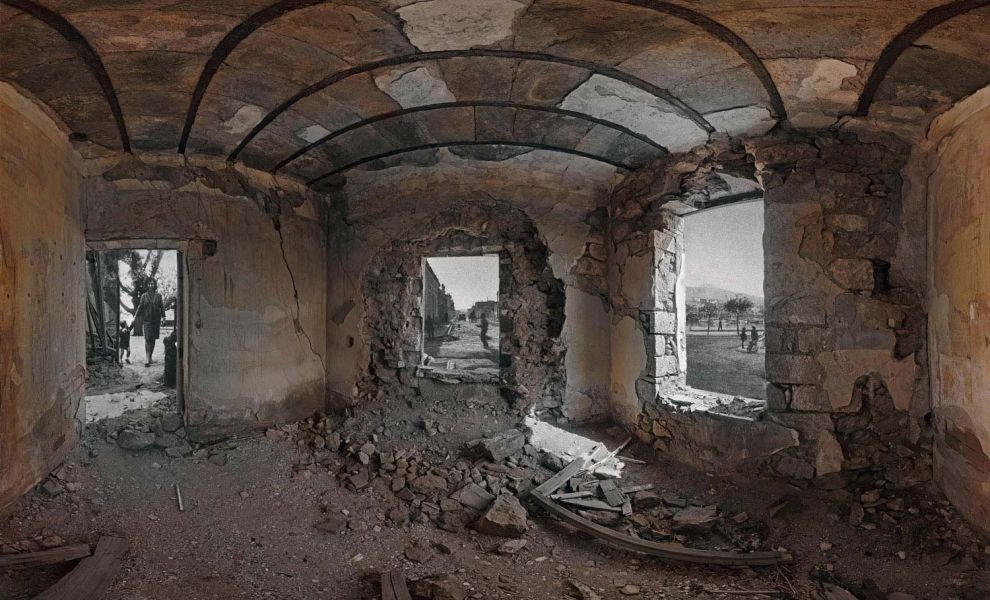TAKIS KOYMPIS / Architect
The ruin, in the photo-syntheses of Christos Simatos, does not constitute an archeological material of a past moment. It marks the beginning of the formation of a crack that divides the present and the past. His takes attempt to coincide absolutely with the entrapment of light, as flashes that take place in the boundary where the two times meet; just as the “dialectic images” of Walter Benjamin, which are placed as immobilized moments of a dialectic at a pause, in the context of the interweaving of the present with the past. In the present case, the two times are recorded simultaneously at the same frame, as enigmatic scenes that have gone by unnoticed, in distant, dark times.
In these anasynthetic images of the ruined space of residences in the area of Lavrion, the ruin emerges as that which once existed, restoring a hypothetical empirical presence, to declare that we from now on can decode it only as incoming, since every present state is already ruined. The ruin is what actually passes through the ages, confronting the tyranny of the present with the photographic deceleration, which processes the ruination of the present in itself.
In Christos Simatos’ takes, the way the outer space enters the domestic interior reveals a peculiar relation between the residence and the public road, causing for the ambiguity of space: the exterior does no longer exist outside the house, but rather constitutes an interior part of it, which, through the process of anasynthesis, is magnified, enigmatically doubled, substituting for the absence of public space, while at the same time replacing the experience of the first glimpse.
At this point, the attempt to avoid the activation of antagonism between the reviving restoration and the optical mechanism of the photographic device is evident, in order to achieve a synchronia, that opening of a space which transcends the nostalgic recall of the once inhabited.
Synchonicity means focusing on the non-experienced, the eluded, in order to return to a present never before experienced in the past.


